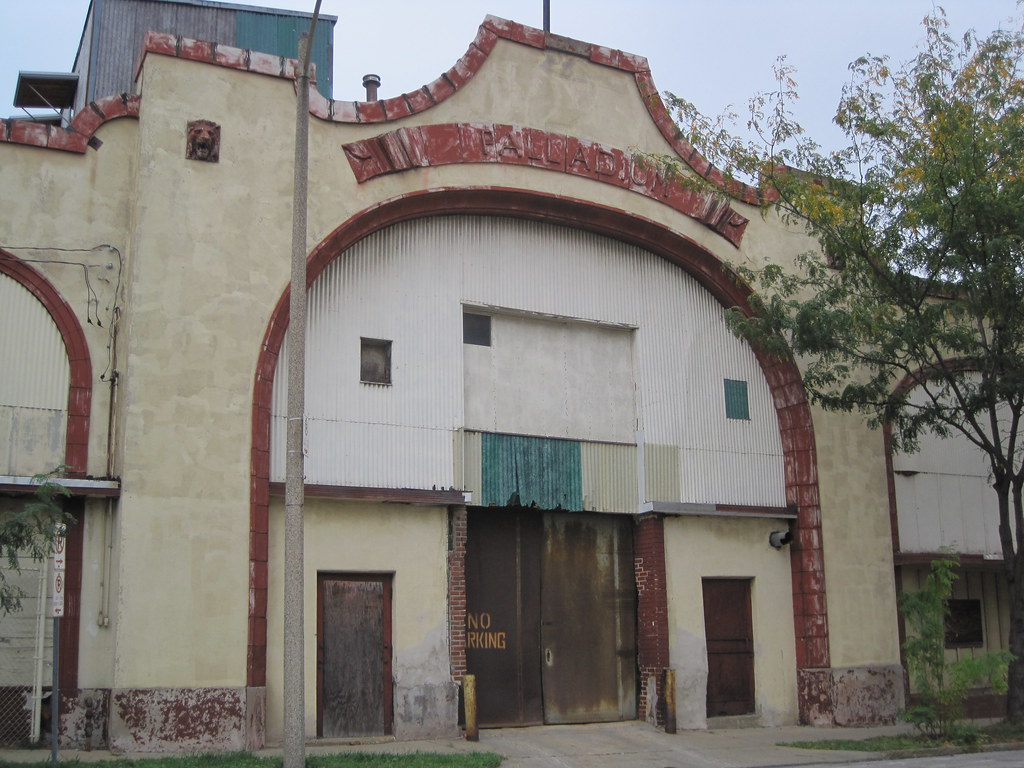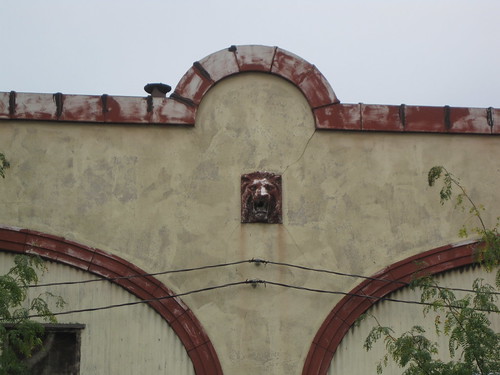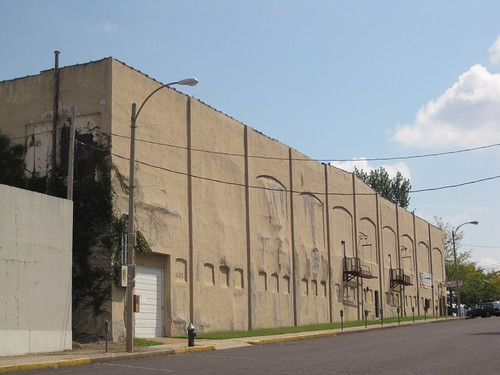 The former Palladium Ballroom now sports a sign stating that the midtown landmark is for sale or lease (number is 314-843-1292). Above is a view of the mighty terra cotta-surrounded entrance on Enright Avenue just west of Grand. Once upon a time, this entrance contained elegant doors and windows facing the carriage houses of Vandeventer Place across the street. Now, the arches of the Palladium are covered with siding, and across the street is the utilitarian side face of the John Cochran Veterans Hospital.
The former Palladium Ballroom now sports a sign stating that the midtown landmark is for sale or lease (number is 314-843-1292). Above is a view of the mighty terra cotta-surrounded entrance on Enright Avenue just west of Grand. Once upon a time, this entrance contained elegant doors and windows facing the carriage houses of Vandeventer Place across the street. Now, the arches of the Palladium are covered with siding, and across the street is the utilitarian side face of the John Cochran Veterans Hospital. Still, the exotic form of the Palladium entices the imagination to think about what might have taken place there. The stucco walls and now-painted, but still-intact terra cotta provide the sort of architectural allure that always transcends neglect.
Still, the exotic form of the Palladium entices the imagination to think about what might have taken place there. The stucco walls and now-painted, but still-intact terra cotta provide the sort of architectural allure that always transcends neglect. The scalloped parapets and lion's heads remain.
The scalloped parapets and lion's heads remain. However striking the Enright elevation may be, most people who enter the old Palladium arrive on the Delmar side. Here is the entrance to the thrift store that occupied the old ballroom space on the second floor. This elevation is parged with stucco painted a drab gray that belies the faded grandeur of the building. From this side, large windows are outlined in the stucco, but are not terribly suggestive. The action is on the flip side.
However striking the Enright elevation may be, most people who enter the old Palladium arrive on the Delmar side. Here is the entrance to the thrift store that occupied the old ballroom space on the second floor. This elevation is parged with stucco painted a drab gray that belies the faded grandeur of the building. From this side, large windows are outlined in the stucco, but are not terribly suggestive. The action is on the flip side.Built in 1914, the Palladium was a premiere dance hall in the heart of St. Louis' entertainment district. However, its greater historical significance may come later, when the ballroom operated as the Plantation Club from 1931 through the 1950s. In City of Gabriels, a history of jazz in St. Louis, Dennis Owsley writes that the Plantation Club was owned by Tony and James Scarpelli, who moved it to the Palladium in 1931 from a nearby location at Vandeventer and Enright. The Scarpellis blazed an important trail in St. Louis jazz by hiring African-American musicians. According to Owsley, the Scarpellis even envisioned a mixed-race clientele but could not get the St. Louis Police Department to allow them to admit African-American customers until well after World War II. Hence, the club offered African-American musicians one of the few chances to play for a white audience -- an imperfect arrangement, but one that started cutting the segregation edge in local entertainment.





5 comments:
Wow, I bet if that stucco or whatever was removed, there would be some very intact brickwork underneath.
I always wondered what this building used to be and now I know.
I kinda like the stucco. When was it installed?
I always figured Vet's Village must have been something like a ballroom.
interesting.
Interesting, indeed. Have been in the thrift multiple times, always seeing the side entrance and never the more impressive front face. Will stop and look more closely next time through. Thanks for the info.
The VA is planning a major expansion. I wonder if they will purchase the building and build some crap garage or something of that sort? Or, perhaps they could use the building or land for a reasonable urban-minded expansion? I have no idea, just know that a major expansion is in the works.
Post a Comment